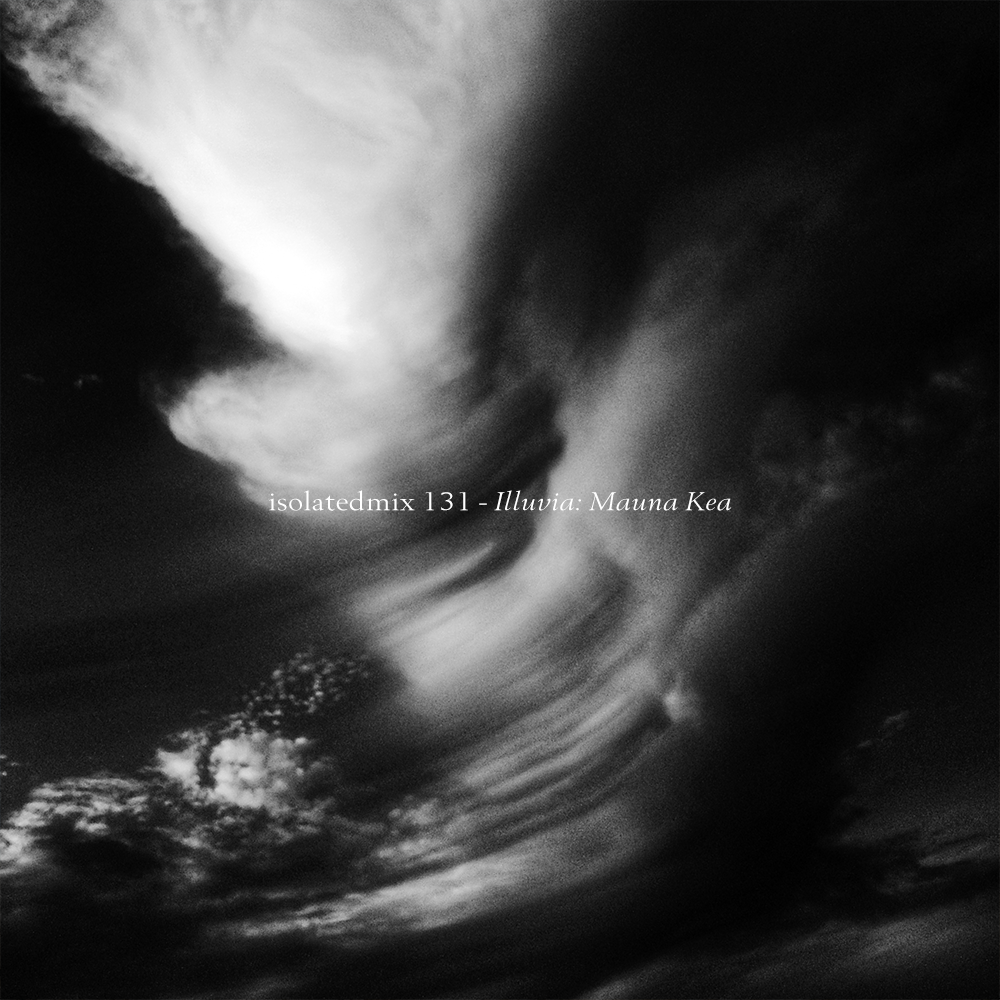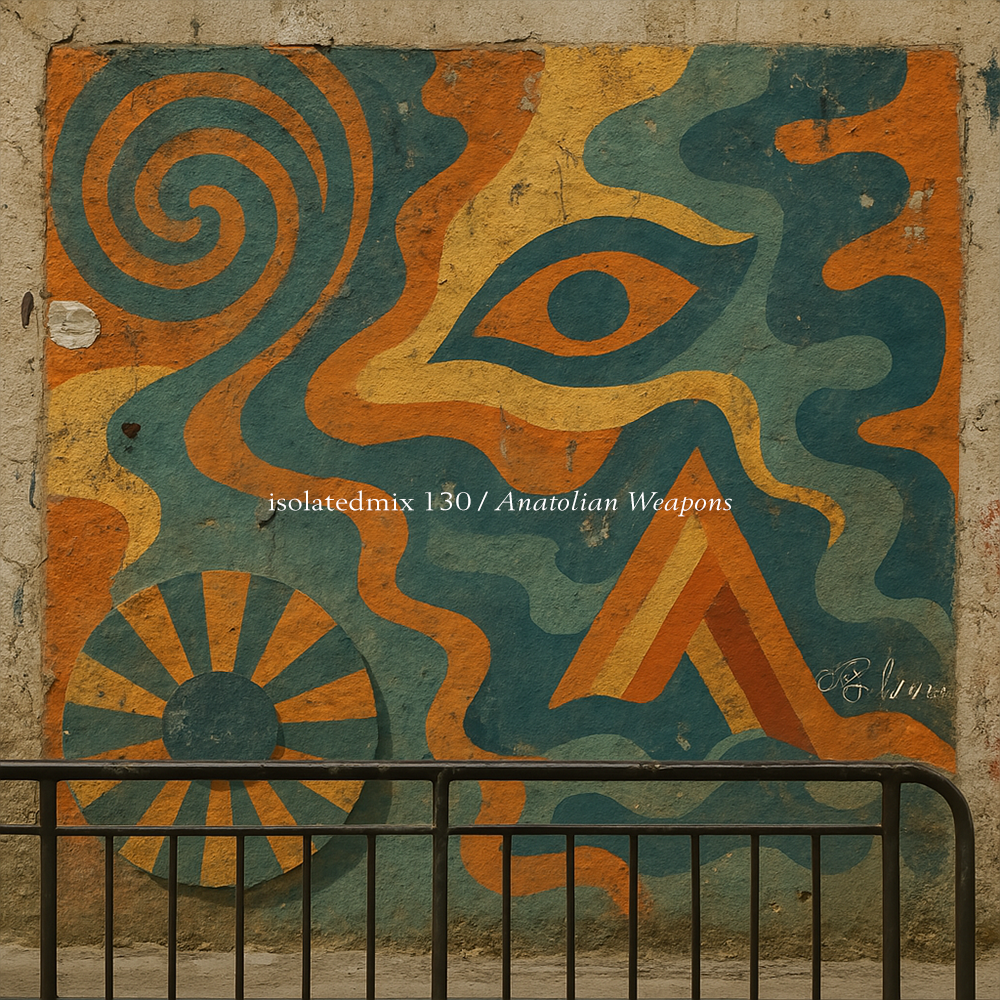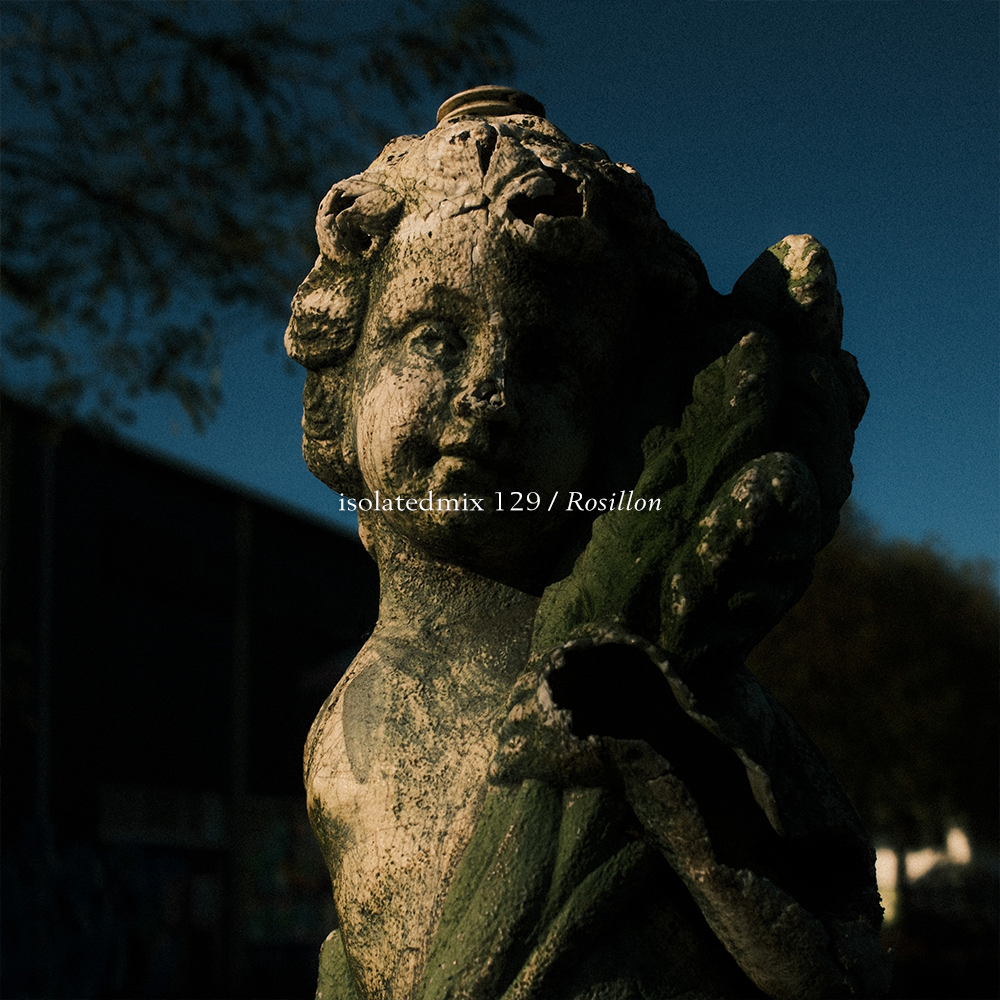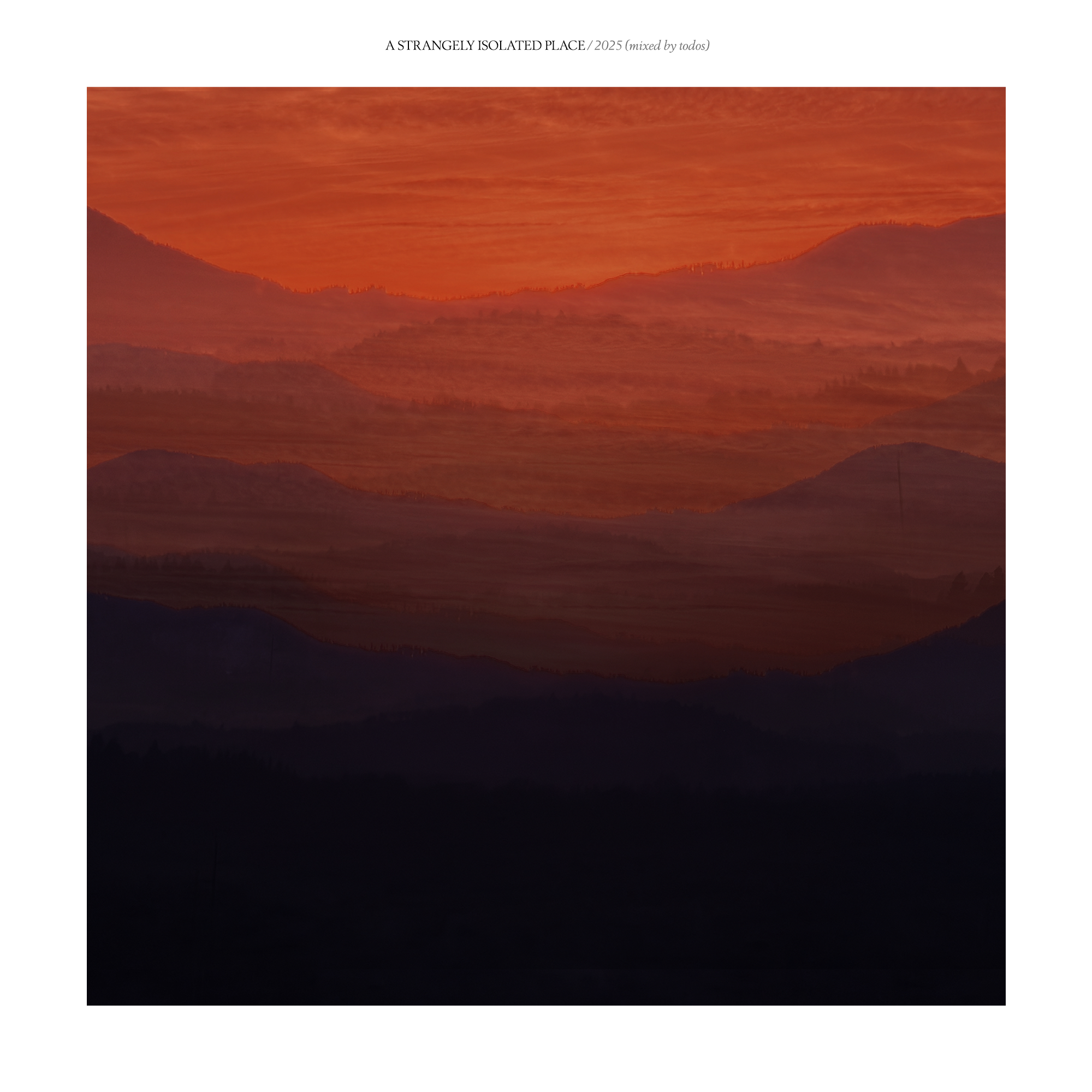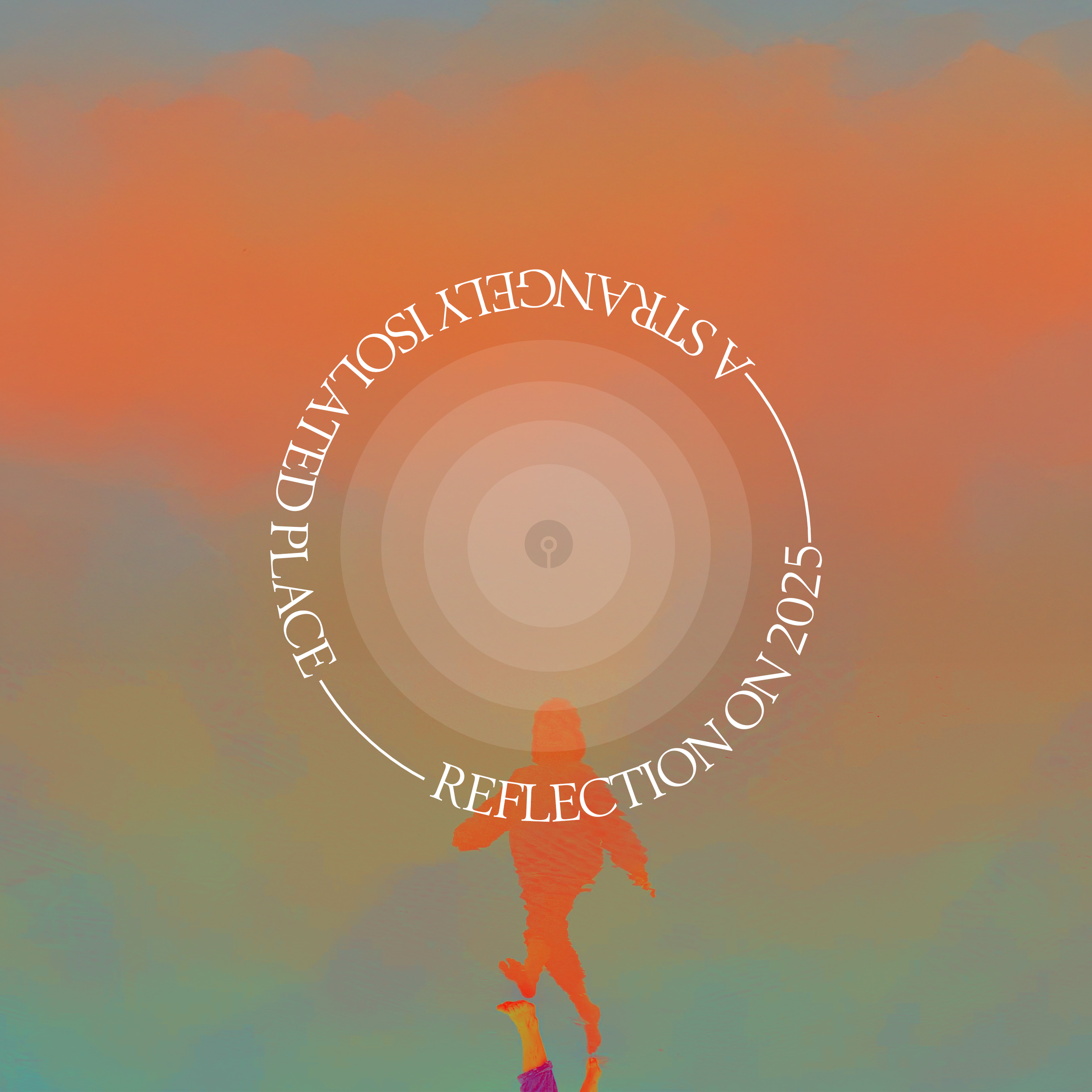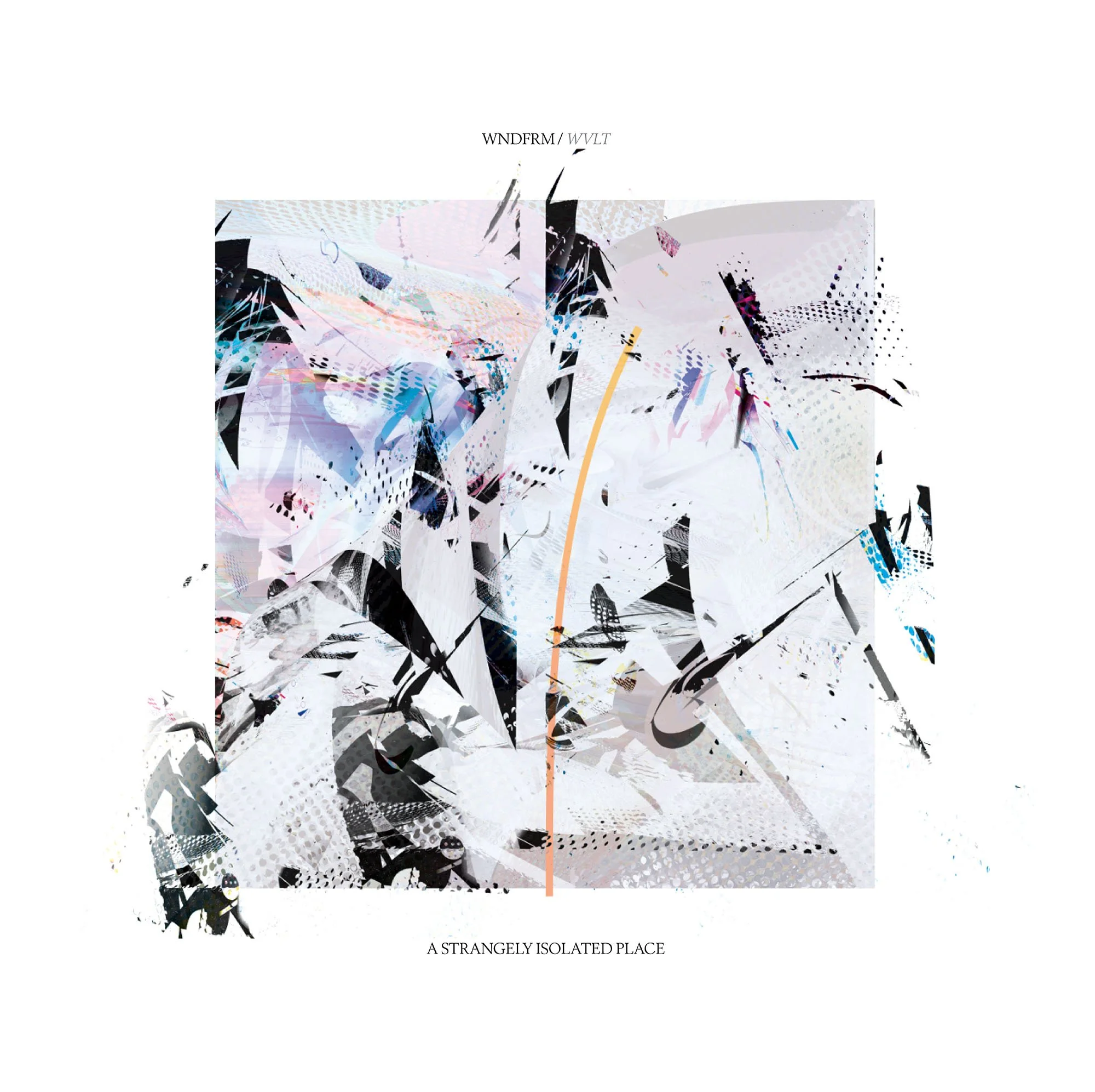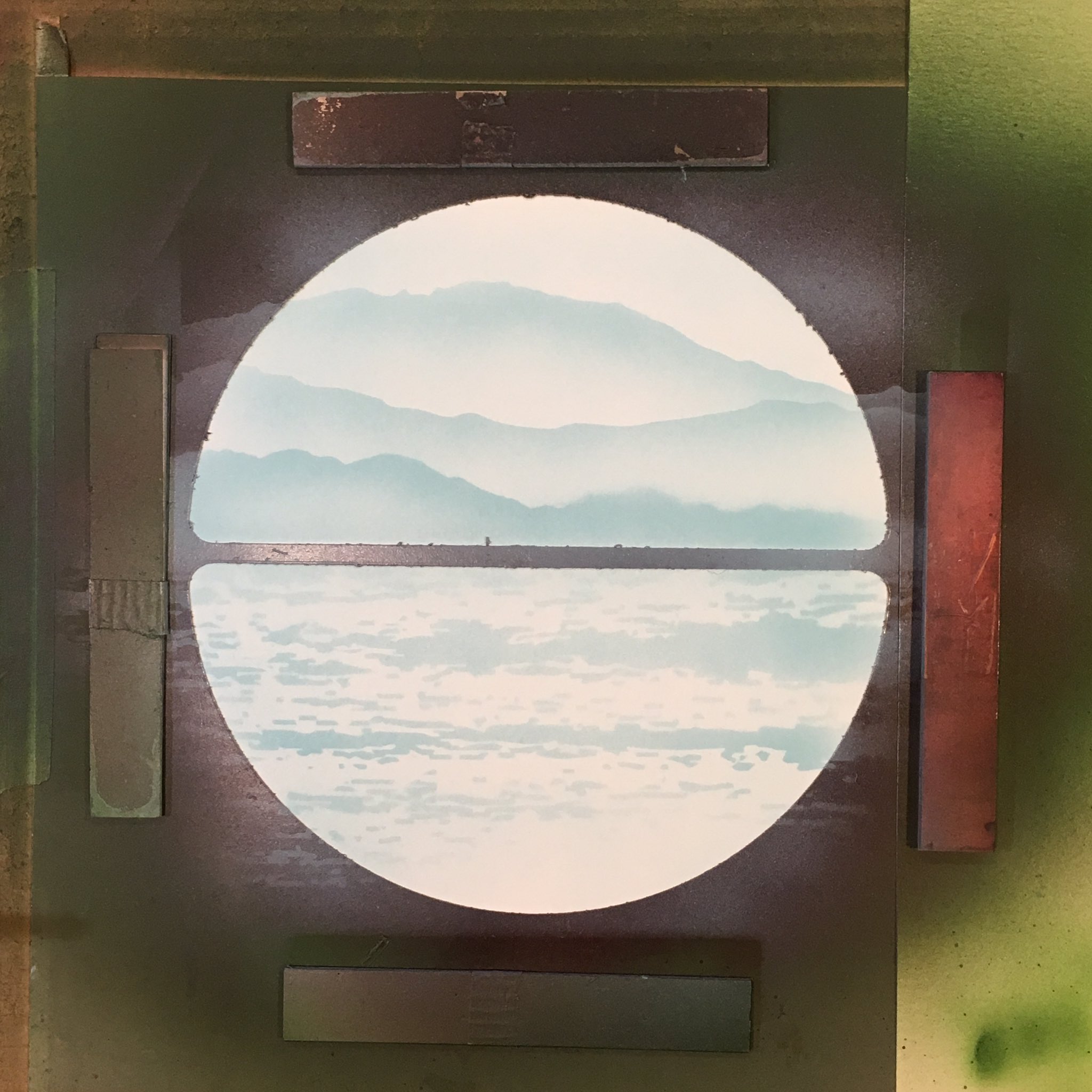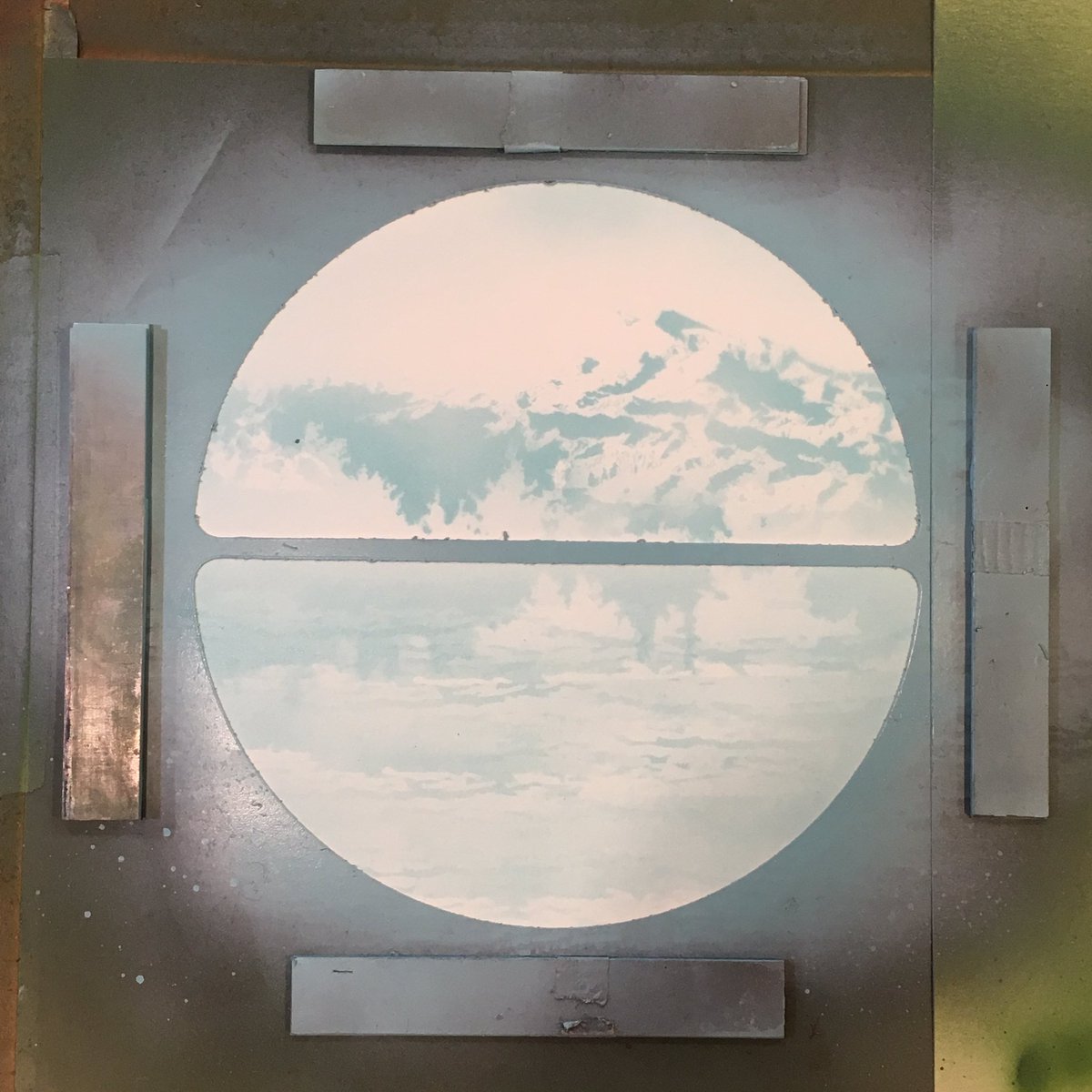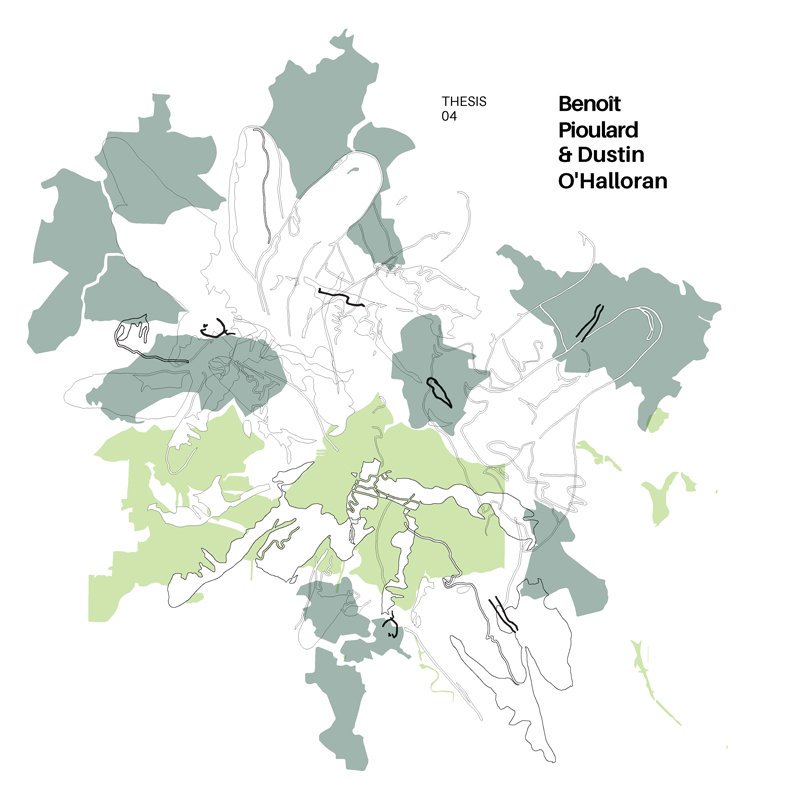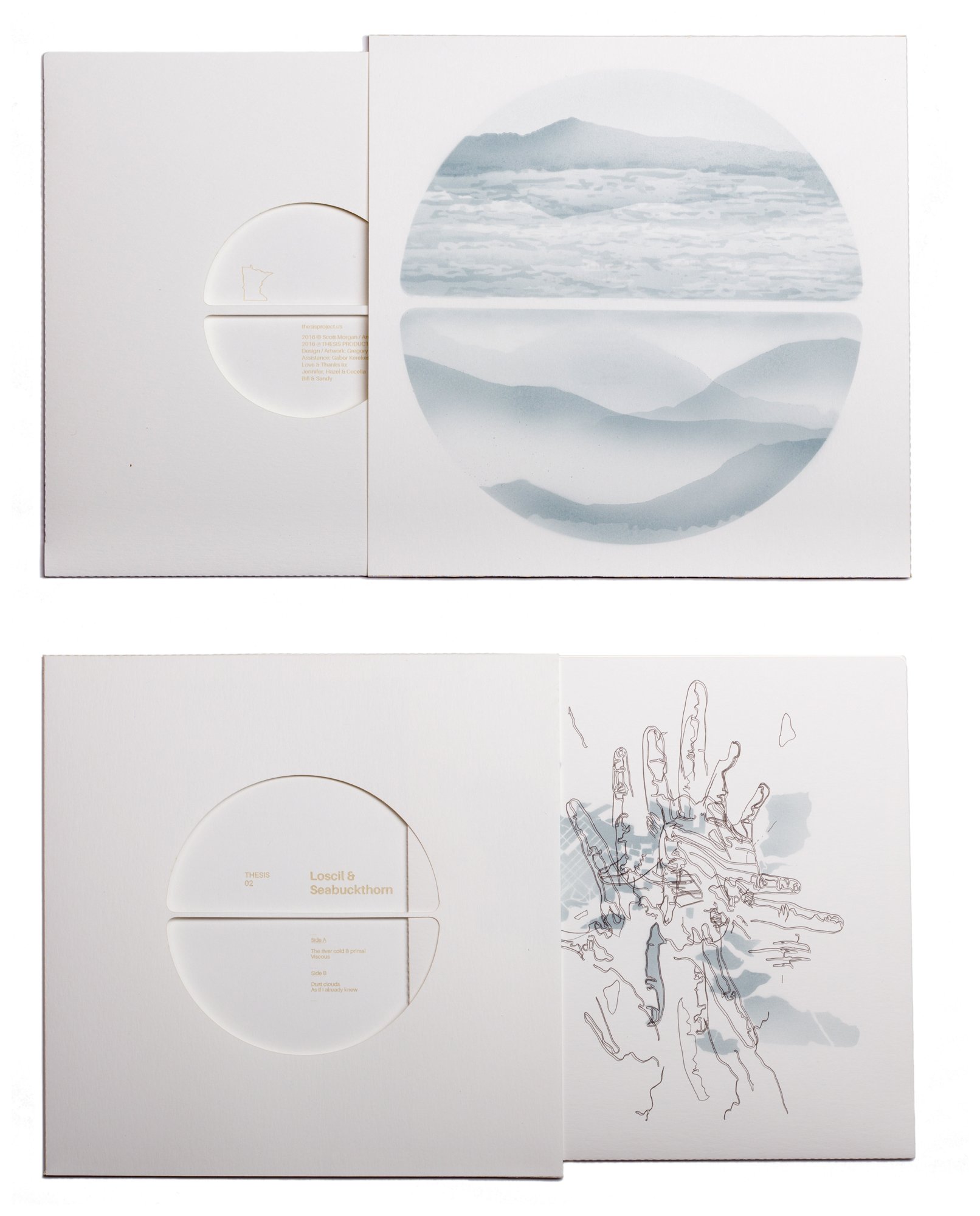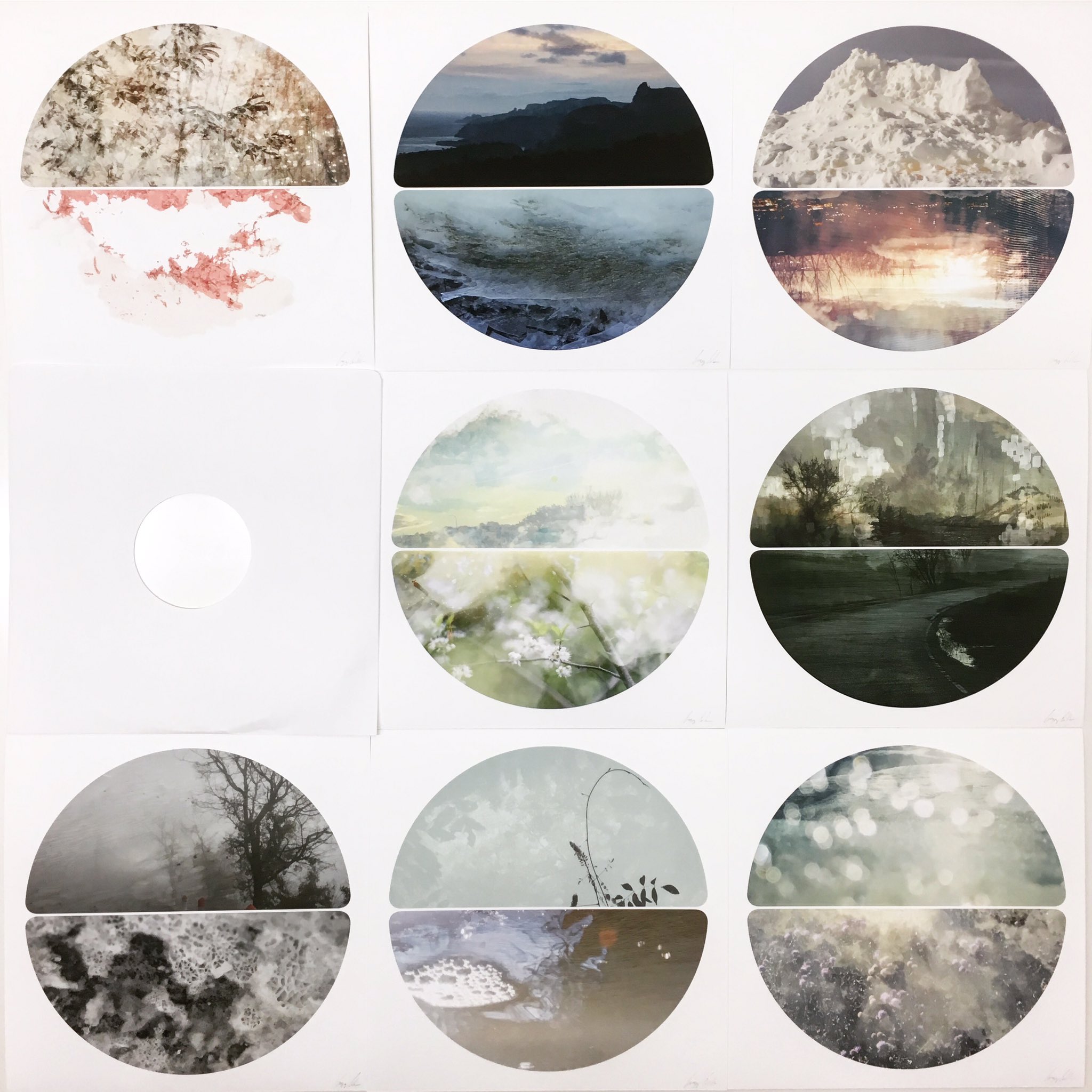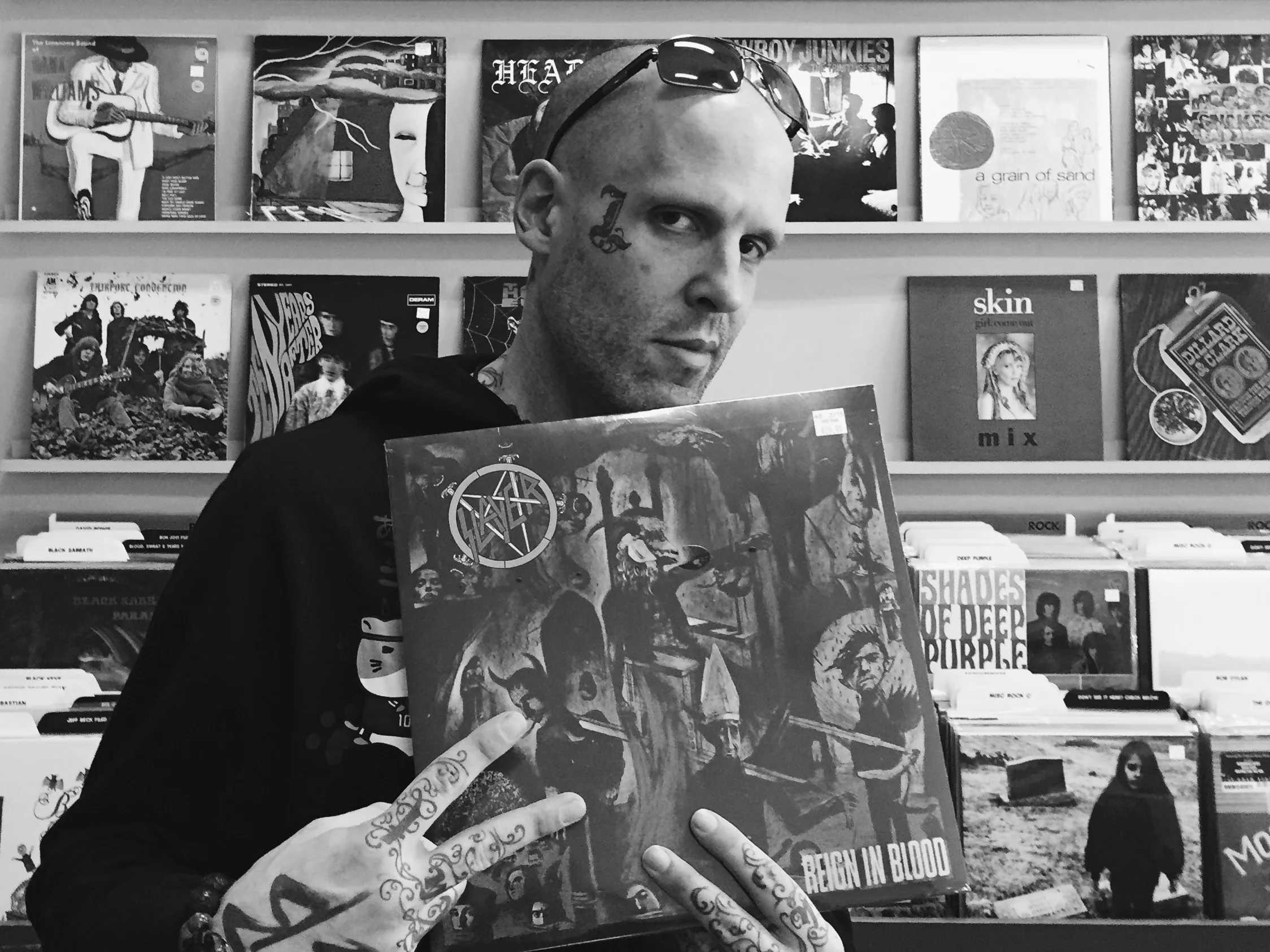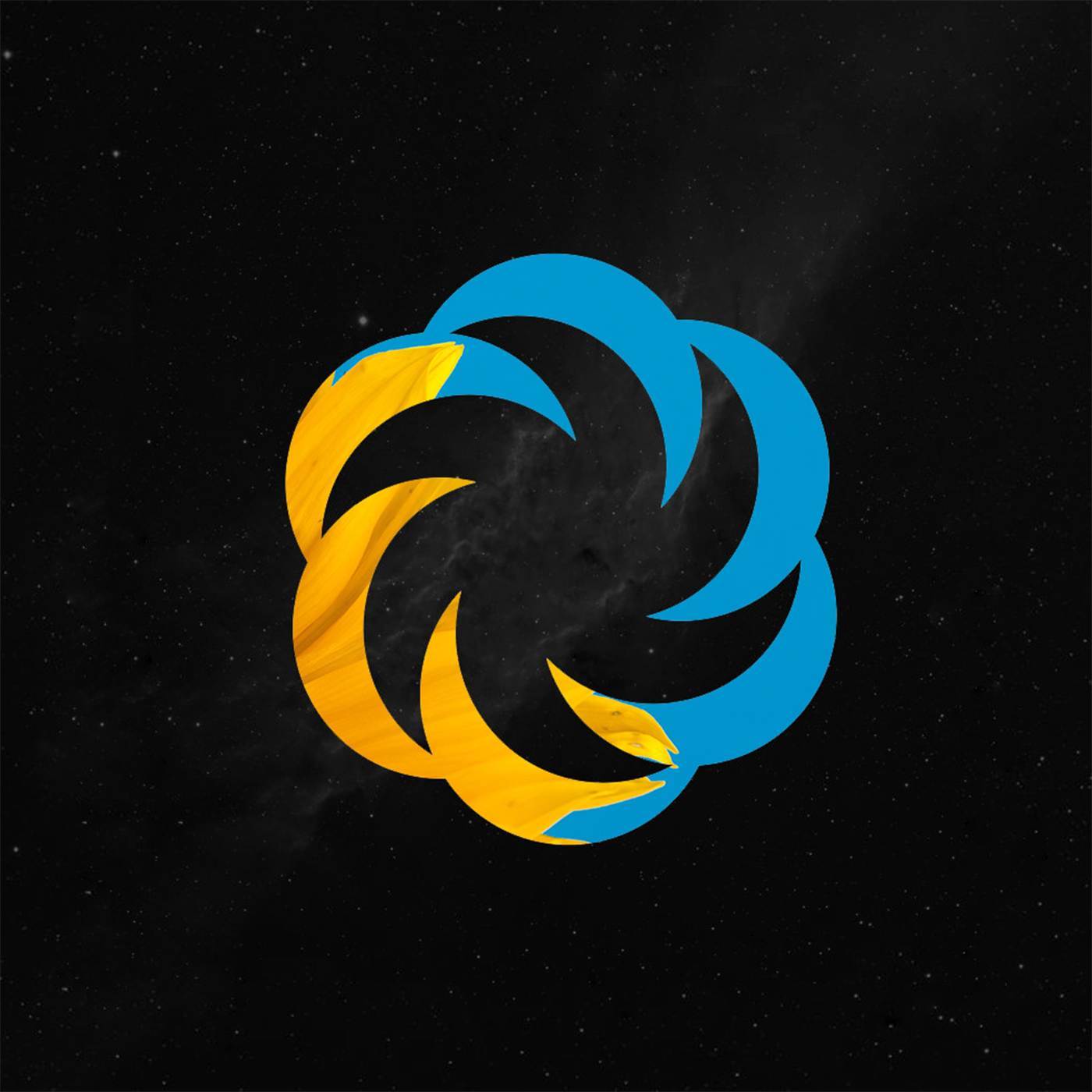Since the first isolatedmix by Ulrich Schnauss in 2009, we’ve been lucky enough to explore many of the artists, DJ’s, producers and inspirations behind this site’s inception. It started as a way for me to dig into what makes some of my musical heroes tick and to this day is a way for me to unearth some insights behind my favorite musicians, both new and old. Isolatedmixes over the years have been themed; full showcases; focused on a specific concept, or simply tracks from the heart. They’ve provided a unique angle on a musician or DJ through the lens of ASIP and each recalls a specific moment in time for me as ASIP has evolved, and I’m sure many others too, who have been along for the ride since the beginning.
The invite sent to this particular contributor has been a dream since before the series even existed. One half of Global Communication; remixer of the finest order; Jedi Knight, Sleep Science Coach; multi-genre DJ, plus a personal memory of a hands-in-the-air-festival-moment-circa-2001 with Take Me With You; we welcome Tom Middleton, and our #100th isolatedmix.
As the man behind some of the most magical ambient music from the past 20+ years and perhaps my #1 ambient record with 76:14, Tom has spent the last few years studying, and educating on the topic of music and sleep. His experience ultimately led him to use his wisdom to good effect, trying to better our musical and mental livelihoods and you’ll struggle to find anyone more suited. Passionate about music in its purest form across multiple genres and disciplines, it was clear after speaking to Tom on the phone recently that he lives and breathes his work, and is dedicated to making a positive change in the world through music.
Pioneering research around the effects of music helping with sleep, culminated in Tom designing an album fit for that very purpose titled ‘Sleep Better’. Backed by science and years of studies, he now counts millions of subscribers who use his music for mental and emotional wellness through his productions in the Calm app, and speaks at conferences around the world as an expert on the topic.
We were lucky enough to (nearly!) have Tom to play at our first ASIP London show back in March as a special surprise guest, but due to Covid-19, those plans were unfortunately put on pause. But, there’s one thing that dastardly thing can’t ruin - the creation of a mix to enjoy anywhere - lockdown or not. Tom’s mix, clocking in at over 3.5hrs long is a true journey into gentle moments; reaching into outer-space; and combining classic-sounding ASIP inspirations; weaving in and out of the many worlds of Tom Middleton over the years. Featuring several tracks from his own back-catalog alongside many personal touches; an exclusive premiere of a new collaboration with Ulrich Schnauss (we’ve gone full circle!) and even a track by Tom’s Jazz Guitarist Grandfather, taken from an old 78. We’ve got a full track-by-track breakdown by Tom below…
Given my admiration for Tom goes back many LP’s and many decades, I sent a few questions his way to accompany the mix. So hit play and get reading below, as we dive into his many projects, inspirations, some niggling personal wonders surrounding Global Communication and of course new music (and that repress!)
This has been pure fan-boy territory - but what else would you expect? Thank you Tom, for so much time and effort that went into the mix; the accompanying questions and the detailed notes, all completed within some very surreal and challenging circumstances for all.
I present to you, the Jedi himself.
~
Listen on Soundcloud, Mixcloud, or the ASIP Podcast.
Track notes & mix introduction from Tom
“Creating the ASIP 100th episode has been a delight, an honour and a privilege. Thank you for this opportunity Ryan. 🙏🏻
I wanted to integrate sounds and music that illustrates my journey to this point. With notable works that emotionally resonate deeply with me (and I hope with the listeners.)
My manifesto and philosophy hasn’t changed much, I still seek to feel that human unique expression of sincere feeling, pure emotional integrity, that an artist can embed within a plethora of frequencies.
From sparse abstract textural pieces that simply evoke colours, temperatures, feelings, to more complex arrangements and compositions that are more detailed and figurative in how they describe the artists vision. Inspirations are clear; Sci-Fi to Sci-Fact, Classical, Soundtracks, Electronic and Ambient to experimental and organic human performances juxtaposed with the sounds of machines.
Highlights include the sonification of the oldest known sound in the cosmos, to moments from my childhood. The voice of Carl Sagan and Vangelis’s soundtrack to The Cosmos, JMJ’s joyful, majestic and uplifting Equinoxe Pt 1 (I recommend playing this if you would like an energy and mood boost). Then my first profound musical memory of my Dad placing me in the stereo sweet spot to listen to Tomita’s Snowflakes Are Dancing vinyl LP at the age of 7. An unforgettable moment hearing Tomita’s peerless synthesised arrangements of Debussy. And the back of the sleeve piques my curiosity into the world of analogue synthesisers. Vangelis, Tomita and Eno are the clearest inspirations in all of my work.
A snapshot of the indelible scene in Bladerunner when Rachael makes her first entrance. Followed by a selection of tracks that all have these profound qualities for musical story telling.
The delicate subtlety of Sigur Ros, the warm harmonies of Underworld.
Eno’s 3M5; a few moments of exquisite beauty that for me describe a place I could happily go and live.
GC 4:14 is one of my personal favourites from 76:14 - without realising I had performed the lead synthesised melody as if it was a ‘Cello - my second instrument.
bvdub - this is so hypnotic and enchanting - I can listen to this on loop for hours without fatigue.
Steve Roach, for me is one of those underrated geniuses that to my mind deserves more recognition. His ambient music in many ways is more refined, better produced and more sophisticated than some of his contemporaries.
I’ve segued in a moment from the new GCOM exoplanet exploration project. I loved imagining the sensation of experiencing a refreshing new atmosphere for the first time.
Another Eno classic for me - a track to lose yourself in.
Had to include a more structurally recognisable work from the late sound design genius Thomas Denis Qebrµs. For those unfamiliar with his work. I implore you to dip in and experience a level of unprecedented audio-sensory immersion. At points, it can be uncomfortable and challenging, but there is something so compelling about hearing a musical form that has never really been heard. He achieved his goal of creating alien music.
We leave the first hour with an optimistic crescendo cue from the Prometheus Soundtrack.
A flashback to the untouchably epic theme from Carl Sagan’s Cosmos, which is right up there as one of my all time favourites.
And this direct reference to Vangelis’s production and orchestration style which provided the reverential inspiration for the opening track Sunset from Sleep Better.
I made a special ambient edit of Reload ‘Event Horizon’ that blends the intro and outro sections without the intense rhythmic central workout.
A nod to contemporary 90’s pioneers, educators and inspirations include BOC, The Orb and Spooky (goodness Orange Coloured Liquid is sublime isn’t it?!)
Richard’s effortlessly sublime Lichen transports me straight back to Cornwall every time.
This mix gave me the opportunity to showcase the extraordinary talents of Jeff Taylor Cross - (Apple’s mastermind behind the evolution of Logic / Pro X) who’s career trajectory though music, design and beyond into app engineering and development is unparalleled. An unsung hero in our world of music production! Please extend an applause for Jeff and his team, without whom most of the current wave of ambient music might actually have never been produced without this incredible, limitless creative music production platform.
I’m a huge fan of Albuquerque’s guitar virtuoso and inspiring educator Andy Othling aka Lowercase Noises - and I highly recommend checking his Youtube channel for the most enchanting live ambient performances. Simple Sounds in Simple Places and also informative ‘how to’ videos.
I had to include the joyful electric autoharp ambience of Laraaji - head to the full 20 minute version, sit or lay back, eyes closed, and deploy some conscious breath-work for a truly transcendental experience my friends!
I love the 528Hz Love Frequency drone sequence from Travis (Machine Drum). And here’s a full hour of 528Hz bliss. Feels good to me!
A special mention to the inspiring Yoko Sen. I’ve included this graceful and sensitive sleep-scape as a tribute to the incredible work she is doing in rescoring the sound of hospitals and creating music for palliative care.
I’ve sequenced some introspective and achingly beautiful modern electro-classical cues and electronic masterpieces. Sienna - recommend exploring his harmonically empathetic catalogue. Ilya Malyuev - another lesser known but extremely accomplished artist that truly needs to be discovered.
Interwoven with Jon Hopkins remix of Sea Of Glass, and a few artists that may not be so familiar to the ambient community. The aim is to increase awareness of the extraordinary and abundant musicality to still be discovered. Which synergistically aligns with Ryan’s visionary imprint and radio station.
I’ve included the debut GC release Incidental Harmony which marked the start of the exploration of pure emotions in sound. And an exclusive debut for a collaboration between myself and Ulrich Schnauss we created more than 15 years ago..have to work out exactly when!
Mmoths - this chord progression is so powerful it stops you in your tracks.
John Beltran - Clouds Pull - the most exquisite and uplifting strings and in my opinion on a par with Sebastien Tellier’s La Ritournelle.
Universal Solution - Liquid Love is so potent, has such positive energy, Gavin is so talented and really knows how to channel emotions into sound. I would recommend anytime you need your spirits uplifting.
Ralf and Florian - Tanzmusik - had to include a tribute to one of Kraftwerks founding members Florian Schneider-Esleben, who we lost in April. This group has had more impact on our world than any other. And this is one of those naively beautiful pioneering works that I return to regularly for that simple and playful charm of melody, harmony and rhythm. Think about it. We might not even be doing what we do without their contribution to electronic music.
Brian Eno’s 1:1 sits in the rotating top of my all time favourites, along with An Ending (Ascent) and Ikebukuro. Unparalleled minimalism and effortless execution. Ambient perfection.
Closing the episode we rewind through time to the 1950’s. And a dusty and crackly 78rpm my Grandmother had kept of a recording my Grandfather (whom I never met) Tommy Middleton performed Jazz Guitar on. The track is entitled ‘Always and Always’. In those moments between verses I can hear Tommy’s chords strums and am reminded where some of my musical DNA comes from.
Couldn’t leave you all without a few poignant words from our friend Ben Kenobi (will never forget watching SW at the age of 7 and the profound impact it has had on my imagination and sonic trajectory).
The Force Will Be With You Always.
Huge thanks to Ryan and the important work he is doing in expanding the voice of this subtle musical form around the world.
Hope you enjoy the music, the feelings and the stories.”
- Tom M 01/07/2020 | Instagram: @tommiddletonmusic
Full Tracklist
01. Tom Middleton - ASIP + 9128 intro
02. Global Communication - 0:54
03. The oldest sound in the cosmos - cosmic microwave background radiation from the Big Bang Tuning out Saturn radio waves
04. Carl Sagan - Voyager Gold Disc interview
05. Ganymede and Whistlers
06. Jean-Michel Jarre - Equinoxe Pt.1
07. Tomita - Suite Bergamasque / Clair de Lune
08. Vangelis - Dr. Tyrells Owl
09. Chihei Hatakeyama + Federico Durand - Luisa
10. Sigur Rós - Ba Ba Ti Ki Di Do
11. Underworld - Sunshine
12. Brian Eno - 3M5
13. Julianna Barwick - The Harbinger (Alex Somers Remix)
14. Lowercase Noises - The Last Stages of Consumption
15. Global Communication - 4:14
16. Kara Lisa Coverdale - Grafts (edit)
17. bvdub - Make The Pain Go Away
18. Steve Roach - This Moment Is Memory
19. GCOM - Atmosphere Test
20. Brian Eno - Signals
21. Qebrµs - ۩ ִ ְ ֲ ֳ ֲ ۩ - 05 ฌฎ๒๓๔ญ°°°°°
22. Marc Streitenfeld - Earth
23. Vangelis - Heaven and Hell (Theme from 'The Cosmos')
24. Tom Middleton - Sunset
25. Reload (+E621) - Event Horizon (TM edit)
26. Boards of Canada - Olson
27. The Orb - O.O.B.E.
28. Shur-i-kan (Tom Szirtes) - Ebb and Flow
29. Jeff Taylor Cross - Ambient 02
30. Spooky - Orange Coloured Liquid
31. Marcomé - Memoria
32. Aphex Twin - Lichen
33. Lowercase Noises - Ambient Songs 06
34. Laraaji - Being Here
35. Machine Drum - 528Hz Love Frequency
36. Yoko Sen - Sleepscape 6
37. Tom Middleton - St Ives Bay
38. Dustin O’Halloran - Memories (Lion)
39. August Wilhelmsson - Somewhere in Between
40. Sienna - Seven Bays for Seven Days
41. Lights & Motion - Glaciers
42. Rone - Human
43. Tom Middleton - Sea Of Glass (Jon Hopkins mix)
44. One Divided Soul - Of
45. Jakob Ahlbom - Ether
46. LA Synthesis - Zyllvakrynn
47. The Presets - Promises (Nils Frahm Version)
48. Ilya Malyuev - Universe
49. Global Communication - Incidental Harmony
50. Tom Middleton and Ulrich Schnauss - Midaus 1
51. Tom Middleton - WYV AUW CHU (Ambient mix)
52. Mmoths - Deu
53. John Beltran - Clouds Pull
54. Universal Solution - Liquid Love
55. Ralf and Florian - Tanzmusik
56. Brian Eno 1:1 (excerpt)
57. Felix Mendelssohn's Hawaiian Serenaders (featuring Tommy Middleton) - Always and Always
58. Ben Kenobi - The Force Will Be With You Always
~
Interview with Tom Middleton
Let’s set the scene. Where are you right now and what was the last thing you listened to?
Italy - Vangelis - Création Du Monde
I’m going to start with the obvious… 76.14 is often held up as one of the greatest ambient albums of all time. Did you know you were on to something special when it was released? Do you look back and see it in a similar light?
Very proud of it, and felt like it was an enlightening, evolutionary and educational work. Whilst I’m happy to listen to it, but there are some tracks I prefer to others now. 4:14 and 9:25 are my personal favourites, and I never tire of them. The progression in terms of where it began, the elements that formed it, and where we could take it forward. Exciting project for me.
The album (76:14) was a chance for me to contribute more to the whole process whereas before Mark was mostly in the driving seat with tracks as Reload. I came in as E621 to add those trademark melodic and harmonic elements. It was a logical and natural artistic evolution from the initial concept I had on my birthday in ‘92 for pure emotions in sound that may use rhythmic and textural foundations from sounds of life and nature that bore Incidental Harmony and Sublime Creation on Evolution. And subsequently Ob-selon Mi-nos ‘happening’ after I lost my Uncle and randomly being in the studio for a session that initially started as a remix project but ultimately it was so different from the original it was essentially a new track. Including the sounds of passing time and movement through space with the Grandfather Clock, trains and planes as sonic metaphors for the passing of a loved one.
It was at times cathartic but deeply rewarding to create. We weren’t considering a niche dance-floor style, simply flowing intuitively, just making what we felt after the educational and exploratory experience of re-translating Chapterhouse’s Blood Music album into the Pentamerous Metamorphosis. This really helped us focus the process and refine our sound ready for 76:14. But Mark and I were oblivious to it being part of any scene or genre. We were pretty isolated from the Ambient Techno hub in London down there in Crewkerne/Somerset!
Ah the infamous Southwest England 90’s crew! Are you still in contact with Richard (Aphex Twin)? Have you guys ever discussed a new collaboration? If not, how can we make it happen?!
Yes, as it happens. I saw him a while back and we chat by email. We did bounce around various ideas. Basically I’d need to go up to his place as he tends to stay local.
Talking of Aphex, 1994 was (in electronic/ambient music at the very least) one of the most defining and greatest years for ambient music (Aphex Twin, Biosphere, Autechre etc). Who or what was inspiring you at the time of producing 76.14?
Music culture was the biggest influence and what we were listening to. Eno and all his ambient collaborators! Lanois, Hassell, Budd, Brook, Laraaji, Tangerine Dream, Vangelis, Tomita, Kraftwerk, Peter Gabriel (particularly Passion - soundtrack to The Last Temptation Of Christ - still peerless and one of the most atmospheric albums), Jarre, Cocteau Twins, This Mortal Coil, Dead Can Dance, John Barry, John Williams, Ennio Morricone, Vaughn Williams, Mahler, Grieg, Debussy, Ravel, Fauré, Chopin, Glass, Reich, The Smiths, The Cure and for me : Prince, Metheny, U2, Human League, OMD, Depeche Mode.
And our peers… Aphex - of course! (pre Plaid) Black Dog Productions, Carl Craig (as BFC and Psyche.) Derrick May, Kevin Saunderson, Juan Atkins, B12, some of the R&S, Apollo and Eevolute artists.
Plus films and scores..most of the usual Sci-Fi suspects plus more arthouse and natural world inspired works such as Koyaanisqatsi, Attenborough. Personal relationships, family life, social life all had an inevitable impact on the music too.
Have you ever wanted to soundtrack a film?
Totally… and it’s on the agenda. Would love to score an epic Sci-fi / Sci-fact story. Yes, obvious, but I’m a Sci-fi nut.
What are your thoughts on the output of electronic ambient music today? Do you see us having another defining period or year similar to that infamous year of ‘94?
Actually I’m discovering some wonderful ‘neo-ambient’ or whatever it’s called now!
Although not always new-new, but new to my ears. The joys of Bandcamp, Soundcloud and Spotify. Clearly a new wave coming through. And in some cases with a really authentic, well-considered and produced sound - the legacy of Boards of Canada and washed out cassette and reel-to-reel tape premastering!
Do you have a favorite style of ambient music? Anyone you’re excited about today?
Steve Roach’s vast library always delivers. Eno, naturally. Alien drone, dark drone, frozen soundscapes, not sure if these are actual sub-genres? I actually listen to a lot of sound designers sample packs on loop. Bandcamp and Soundcloud are great places for discovery, and I think the Spotify Artist Radio algorithm can yield surprising results.
Jon Hopkins, Synkro and Ulrich Schnauss have always been right up there for me. Mark Pritchard, goes without saying. Big big fan of Andy Othling’s Lowercase Noise work - epic, expansive, exquisite, delicate, intensely emotive. Love Jeff Taylor’s one hour ambient challenges… he and I definitely share some similar aesthetics. I trust and respect his taste! He switched me onto you (ASIP)!! Seem to have a fair bit of Stars Of The Lid. Guthrie and Budd, Sakamoto, Leandro Fresco, Astropilot, Clem Leek, Carbon Based Lifeforms. Love film soundtrack and neoclassical composers as well such as Max Richter, Ólafur Arnalds. I may well be a fan of some Spotify Fake Artists(!)
But all of this feels known. My quest is to seek unknown and unimaginable sound sources these days. I get bored with the seemingly endless derivative forms of music. For certain projects I’m working on this is necessary. Sleep Better, for example requires the safety and comfort of ‘known’. But in my own audio quests, I crave the unknown. I want unpredictable and challenging, to feel intentional ‘alien’ discomfort as well as comfortable total bliss.
My favourite next level artist that literally stopped me in my tracks sonically when I first heard his work tragically passed away recently. And I was collaborating with him on a few tracks as well. He was called Thomas Denis aka Qebrus from Caen in Normandy. Mind blowing next level sound design. In my opinion he was ‘the next Aphex’, having been inspired by Richard as well. His legacy will live on. Not ambient, but certainly atmospheric, and very challenging post IDM/braindance/glitch/breakcore whatever you might call it. For me it was completely alien sounds from another dimension.
Speaking of slightly alien sounds, one thing I’ve always wondered when listening to 76:14 - the voices we hear on ‘0.54’ - how did these happen and who are these people!?
All friends, or people we recorded at various times whilst on tour. From the daughter of Pete Townshend (yes...The Who) who delivered it in Italian to our then managers Indian wife, a Russian promoter, Dutch distributor (?), our French PR agent, my English landlady! It’s the same message just translated into bunch of different languages including morse code!
76:14 is up there, but so is the Blood Music: Pentamerous Metamorphosis. How did this Chapterhouse remix album come about? Were the band happy with the result?
I was working in Mighty Force Records and Andy Sheriff came in (I think he had recently moved down to Devon or was staying locally?) He’d picked up Ob-selon Mi-nos and was really feeling it. He mooted the idea of a remix for his band, which we then developed into a re-translation of the entire album. It was such a great experience, working with real musicians/singers. We had access to the all of the multi-tracks, had a critical listen through making notes, curating and cherry picking elements we thought we could use. Then a very natural exploratory creative and production process of highlighting key motifs, themes, passages, textures and parts that we could resample, sound design and craft into entirely new tracks. In some cases a vocal part would inform the entire track, or a melodic phrase or rhythmic part. We were really pleased with it, conceptually and from a sonically aesthetic and production view point. Mark and I headed up to London to meet with Andy and Stephen to play the entire album to them. It was quite a moving experience for all of us! Potent emotional content in the original tracks, amplified and expanded with a little GC mojo.
Were you a big fan of Shoegaze back then? I also admire your remix of Slowdive’s ‘In-Mind’ and it probably helped the cult status of Slowdive grow even bigger within the ambient community that we see today! How did this remix come about?
I’m personally not really a Shoegaze fan. I liked a few tracks from a few bands, Mark was into MBV, I quite liked some of the textures in Spiritualized’s work, and personally was a big fan of Seefeel (are they considered Shoegaze?) The 147 take does seem to have gained quite a following. We remixed many groups during that time, but this came about via the connection with Slowdive’s label Creation via the sub label Infonet which we’d signed to as Reload.
‘Le Soleil Et La Mer’ is perhaps one of my favorite ‘non-Global Communication’ productions, but it has the hallmark of everything you did as GC. Can you tell us a bit more about your work with Mark as Reload, and what made a Reload production different to work as GC?
I agree, it’s one of my personal favourites in the catalogue and clearly a precursor to the eventual sound of GC. You can hear the evolution in the Reload tracks I began contributing to as E621.
Initially I was contributing melodic and harmonic elements, live synth parts, then production and effects and rhythmic elements from Mosh and Biosphere onwards. In addition I think I brought the idea of conceptual and creative narrative to the partnership.
Looking across your discography, it seems like you enjoy producing and also mixing to a strong narrative. What comes first for you; a concept, or the music?
You’re absolutely right. Mostly conceptual starting points, whether it’s a personal research project, a direct result of DJing in clubs or festivals, or simply imagining, planning, drafting a narrative or storyboard and then building. It’s quite classical in a sense. I might not always be scoring, but I hear the music in my head first and usually transcribe via whatever tools I need as audio sketches to finish. But some tracks, particularly the more 4/4 club tech/deep/bass/house tracks might have been jams that I built upon.
I can’t ask questions about all your productions as we’ll be here all day… but, Cosmos - ‘Take Me With You’... The white label / instrumental 12” was a massive summer tune for me at a time when I was going to festivals and I had no idea it was you for a while. I searched high and low for a pressing when it was on the radio every day. What inspired this track? Any more anthems on the horizon?
Thanks! It was a simple feeling, missing someone, and creating a tune that made me feel better. Also a bit of exploration into my love of 80’s synth music, Depeche Mode, Human League, OMD, Kraftwerk. And yes..hold tight..anthems galore coming soon. ; )
If they’re taking you with them, where are they going?
To Earth 2.0.
Let’s talk about your latest project ‘Sleep Better’. It’s no surprise to me to hear you release an album based on sleep given how transcendental your productions are, but it was a surprise for me to learn you’re so dedicated to the study and science behind it. How did that happen? What inspired it?
Literally a wake up call to social responsibility! I felt the need to use what I’d learned instinctively over nearly three decades of producing and performing to millions across 49 countries. Using all of that observational research and experience to make some really useful content that genuinely helps address fundamental human needs and problems. It’s still musical and emotional, but it’s mindful, meaningful and purposeful.
I picked up a phrase that nails this concept - end user empathy. In this case, the need is more sleep, and it opened a huge can of worms. Sleep deprivation is a massive global problem - in fact it’s a modern day epidemic.
The aim was to explore what was out there in this area that claimed to assist with sleep. To discover the most popular tracks and songs globally. Are you ready for a shocker? #1 global Spotify sleep playlists song: Ed Sheeran - Thinking Out Loud. Probably due to his overall popularity…In other studies luckily Mr Eno gets a look in alongside Classical favourites. But all the music that makes anecdotal claims is pretty dreadful in terms of production and sonic aesthetics. I feel I’m at least bringing some of the GC mojo to the proceedings with Sleep Better, and it’s using real scientific research to ‘ethically and responsibly’ trigger the relaxation mechanism.
Can you describe the process for your research and how it impacted the music you produced?
Deep research means reading as many articles, research papers, white papers, academic publications, meta-analysis and Cochrane reviews as possible to find truth and meaningful data and results to inform my psychoacoustic sound designing. To interview experts and dig through podcasts for the latest insights and developments. I then explore and develop ‘sonic strategies’ that elicit specifically designed positive outcomes. This is the psychoacoustic process. I decide on the outcome, and use a kind of reverse ‘emotional engineering’ to fathom out how to make that response happen. It could be through entrainment, neuromodulation, psychological priming...and other ‘tricks’ that make up the secret sauce recipe that I’m sure even AI will struggle to replicate in absence of a human soul!
Did you ever find yourself scientifically being told to do one thing, but artistically wanting to do another when it came to producing the Sleep Better album? What would you say the balance is between science and art within the music?
Yes, very much so, you have to be prepared to deliver a best compromise, whereby if the soundscapes are designed to switch you off for a deliberately passive listening experience, that process actually happens, and yet if you decide to actively listen to the soundscapes, you are still rewarded with a pleasant sonic journey. True to Mr Eno’s ambient manifesto!
Ambient music can get a bad rap for people that aren’t familiar with it, often due to its connotations with meditation, yoga, wellness etc. So what’s the feedback been for your Sleep Better album so far? Has it opened up new people to ambient music, helping them seek more?
The feedback has been incredibly warm and positive. It’s part of a wider campaign around sleep hygiene, which can sometimes get lost within a streaming format like Apple Music or Spotify. We’re trying to help communicate the best way to listen to it as part of better sleep hygiene practice. Simply listening to it without being mindful of your own bad sleep habits or possibly inadequate or ill-considered bedroom environment will always make it a challenge to get a good night’s sleep. Hence the social media campaign and website @sleepbettersounds to provide ongoing dialogue and information on sleep facts, health, science and hygiene.
I hope it will inspire non ambient fans to explore the genre a little deeper.
I’ve always gone to sleep listening to a certain style of music, but it hasn’t always been ambient. Sometimes it can be deep techno just as long as I’m familiar with it and it’s not overly stimulating - it seems to do the trick. Can you describe the correlation between ambient music and sleep?
Interesting, and yes, I fully understand and can relate. There are various modalities that can can influence sleep onset with music.
If the obvious or subliminally implied tempo is slower than your resting heart rate it may start a rhythmic entrainment process triggering the parasympathetic nervous system to respond by switching on the bodies ‘relaxation mode’. If the sounds are hypnotic and organic that helps this process of slowing brain wave frequency, and if the information being processed isn’t too complex, disrupting or arousing this also helps prepare for relaxation. Comforting and familiar sounds illicit positive associations and experiences. This increases the listeners sense of peace, warmth, safety and security which turns off the fight or flight mechanism.
In the case you describe it is exactly that sense of familiarity that aids the switching off mechanism.
Is there anything really surprising that you’ve found in your studies?
Much of the research is a constant surprise and some clearly confirms what I’ve felt intuitively over the 28 years of producing, touring and performing. The connection between music, body and mind is so fascinating. How certain sounds and patterns trigger certain emotional, physiological and behavioral responses. One of the delights was discovering how the sound of ocean waves can be almost identical in tempo to respiration during sleep. Coupled with the broad, complex frequency spectrum it’s one of the most potent sleep inducing natural sounds. As you listen, you naturally start to breathe in time with the waves.
Does a ticking clock (a-la ‘14.31’) not send people to sleep? (It does me, every time!)
It is very relaxing to listen to, I find the strong, relentless transients can be disruptive and personally would prefer nature sounds that don’t repeat.
So what’s your go to sleep track?
Over the years Eno’s 1:1 was the first go to sleep track, then I enjoyed Ikebukuro more for the sensation of floating.
I like ever evolving drone based ethereal textures. I want to be transported somewhere. I enjoy the sensation of floating in space that can be achieved with certain sounds.
I designed the latter half of the tracks in Sleep Better like this. So actually tracks 4 - 8 or sometimes 2 - 8 are sufficient.
There are a number of unreleased 90 minute (complete sleep cycle) versions of sleep induction tracks I’ve made. (Hope to share very soon!) I use 4 x 4 box breathing as well. In slow count to 4, hold for 4, out with an ocean woosh sound, wait 4 repeat for a few minutes. It WILL slow heart rate and relax you, preparing you for sleep. I like to wear a sleep mask. And I’ll use 36dB custom fit ear plugs most of the time. Even if I have a soundscape playing to suppress any external noise.
There’s an official repress of 76:14 just announce and a boxset featuring Pentamerous Metamorphosis PLUS unreleased music. THANK YOU. But, seriously, do you have any idea how happy this will make people?
It’s taken a while and has been hampered by challenges but we are finally there! It sounds incredible, thanks to Mark’s meticulous DAT transferring process and Jason at Loud’s characteristic ‘emotional mastering’ approach. And we are excited to collect it all together into a beautifully designed box set.We’re very relieved and proud that we’ve managed to make this happen and happy that fans will be able to own and enjoy this album physically.
The artwork looks great. What was your brief to Mark (Gowing)? Or did you just let him do his thing?
We asked him to acquaint himself with Ben Drury and Will Bankhead’s original artwork. Then a discussion/alignment on aesthetic values and key concepts, but ultimately gave him free rein to interpret.
The preorder for ‘Transmissions’ on Bleep comes with a rare demo edit of ‘7.39’ - what’s the story behind the edit?
Each track we produced would have to pass the car-test. We would record a live pass to cassette tape, then go and listen to it in Mark’s car and take notes. This critical listening process would inform mix balancing and live effect deployment decisions for premastering the track to DAT. This is one of those versions which we felt had a better Juno 106 patch. For some reason we lost it and had to make it again and something was different. So this is the first version we preferred but couldn't recreate.
I’ve seen the ‘unofficial represses’ of your GC albums out there too, and I know many die-hard fans who have snapped these copies up already not knowing any different. It all got a bit confusing for a while but now it’s clear where people should be putting their money. What was the deal with those?!
Deeply upsetting that clearly there is no communication between major labels and legacy artists. Had we been asked about the repress license we would obviously have declined.
They claim to have used original masters to remaster. This is a blatant lie. And so we feel sorry for any fans who invested in a substandard product that wasn’t endorsed by us, the band.
Word is there’s also new Global Communication music on the horizon and you’ve been playing some new live shows (pre-Covid of course). What can people expect from your new music? How has your style changed over the years?
Yes, I can confirm a new GCOM album (my new solo incarnation of Global Communication) will be released later this year via !K7 Records
Upon reflection, the style is clearly a direct and natural evolution from the industrial techno collaborations with Mark in the Reload years, through the layered emotional sound-scaping of GC and beyond the concept of Lifetracks - soundtracks to life - into the realms of soundtracks to preserve life and where next for mankind. I’m addressing a number of themes from Anthropocene man’s challenges with climate change, catastrophic natural events such as the Tohoku tsunami, bush fires, floods and storms. How we’re polluting the air, lands and ocean, depleting natural resources and getting perilously close to a point of no return, maybe there is no going back? And so what are the plans for man to move off world, colonize the Moon and Mars and eventually become an interstellar species. My curiosity spans many scientific disciplines, from biology, physiology, anthropology, ecology, into human behaviour, neuroscience and beyond into astrophysics, rocket science, astronomy and cosmology. So the album fuses all these areas of personal interest and ongoing research. There’s an educational element and inspiration element too. Here’s a link to a short explainer and backstory created for 10-18 year olds for NASA’s SciArt Exchange program.
Where you aware of the current Breakthrough Starshot project to send a fleet of tiny Starchip probes to Alpha Centauri 4.73 light years away?
My current favourite exoplanet is the enigmatically named Teegarden b with a favourable Earth Similarity Index of 0.95, a mere 12 light years away (which would take 208,430 years at Voyager 1 velocity) But the nearest exoplanet that might be life sustaining is Proxima B at 4.24 light years (20 years by Starchip). Which for Star Wars fans like me has a bonus twin sunset (like Tatooine!) from binary stars Alpha Centauri A and B.
How will this approach translate to your live shows?
The live show is a flexible line up, with myself and guest players, including the genius arranger and multi-instrumentalist Ross Sampson, hybrid drum legend Andy Gangadeen (Chase & Status) and a string quartet. It could scale larger and integrate more string players.
Will have a visual element too that follows the narrative of the album.
I’ve been invited to perform music from the new album and join a panel entitled Sensing Space at the The Humans to Mars Summit in Washington at the end of the summer. Check for updates as it may become a virtual experience.
~
Tom’s Sleep Hygiene Tips
Be prepared to adapt and try different combinations to suit your lifestyle and preferences. Once you’ve decided what combination of sleep hygiene tips suit your preferences and lifestyle, it’s important to be consistent with your sleep ritual.
Even if you don’t sleep well one night following trying sleep hygiene tips, don’t give up! Persevere and eventually you will condition your mind and body to adapt to a new sleep routine.
1. Daylight and Exercise
Try to exposure yourself to daylight as early as possible after waking.
Get a walk in or exercise during the day. New research suggests 3 brisk ‘Active 10’ minute walks are as beneficial as the fabled 10,000 steps.
2. Food and drink
Eat a light non-spicy dinner 2-3 hours before bed.
Limit caffeine from coffee, tea or chocolate after 2pm.
Alcohol can actually stimulate waking a few hours after drinking.
Try drinking warm milk, Chamomile or Passion Flower tea.
Eat 2 antioxidant rich kiwi fruit an hour before bed! (Taiwan Taipei Medical University study still can’t explain exactly why - possible serotonin booster?)
3. Environment
Make your bedroom as a comfortable as possible, invest in a quality mattress and pillows.
Keep the room (cave!) cool and as dark as possible for sleeping.
Black-out blinds or an eye mask if you prefer. Oxygen producing houseplants are a plus.
A red/orange-coloured night light is better than a disrupting and stimulating bright white light.
4. Temperature
Before bed, open the window to ventilate the bedroom for 5 minutes.Cooler room temperatures between 16C and 18C (60F - 65F) aids sleep onset. Try taking a warm bath (not hot) with magnesium-rich Epsom salts to relax the central nervous system. A - 1°C drop in body temperature after bathing aids sleep onset.
5. Timing
Melatonin (darkness hormone), which regulates sleep - wake circadian timing, is naturally secreted from 9pm, peaks between 2am and 4am, then falls to daytime levels by 9am. So training your body when it’s time to sleep and wake up everyday is crucial. Use the app to set a reminder to go to bed so you get into a regular habit.
6. Stress & Anxiety
Limit decision-making and try to not end the day in a negative mind state. Write a to-do list and think positively about the future, think of three good things that happened during the day. Sleep performance anxiety can also be counterproductive so try not to worry or ruminate.
7. Breathing
Whilst sitting in bed, try some deep and slow breathing exercises. Try 4x4 box breathing. Slowly inhale through the nose to the count of four. Be aware of filling your lungs. Hold for four (or as long as is comfortable.) Breath out through the mouth to the count of four whilst focusing on emptying your lungs. Repeat for a few minutes.
8. Bedroom
Limit daytime naps to 20 minutes and don’t nap after 5pm.
Lower your exposure to any bright light during the hour or two before bedtime.
Keep the bedroom for sleep (and sex!) The hormone cocktail of dopamine (happiness), oxytocin (love) and prolactin (gratification) all help with mood enhancement and post-coital drowsiness.
9. Technology
Consider removing technology (TVs, laptops etc) from the bedroom. Limit exposure to blue light-emitting screens, as blue light suppresses the production of melatonin. Although your phone is of course needed to listen to the Sleep Better sounds and emit the warm orange sunset glow, try to avoid looking at your phone screen (scrolling through social media etc.) before sleep.
Keep an alarm clock facing the wall to avoid worrying about the time.
Use a gentle natural sound like birdsong to wake up to.
10. Still can’t sleep after 20 minutes?!
Don’t worry - get up, go to another room, read a book, write down your thoughts, continue listening to Sleep Better, try some more 4 x 4 breathing and wait for the next sleep onset phase to occur.










